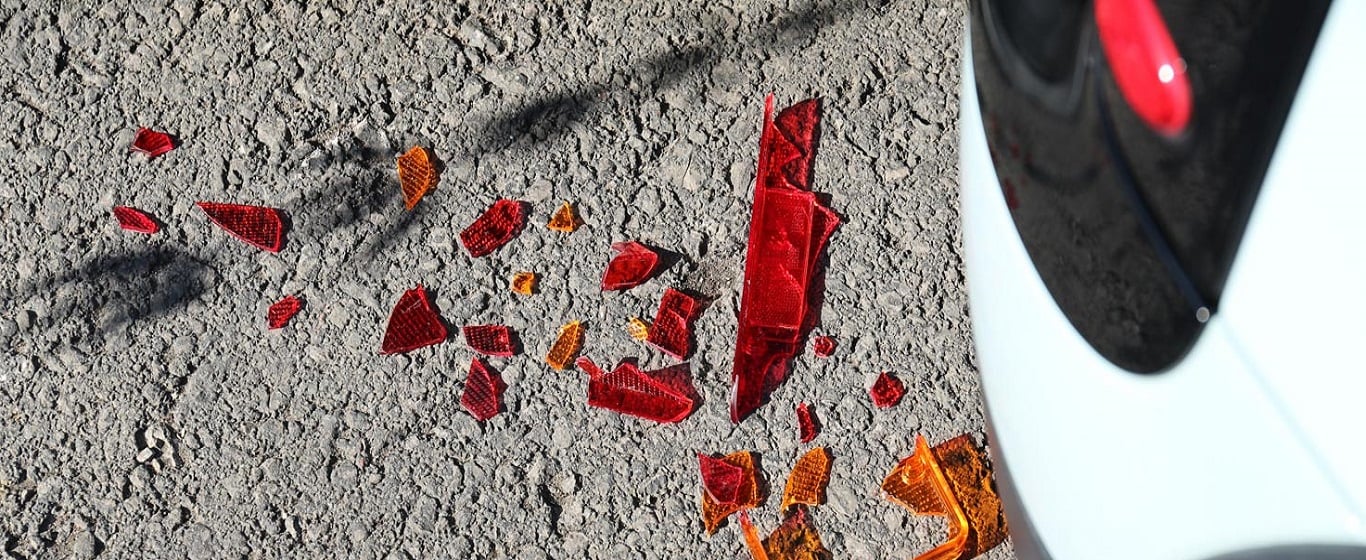Induced collisions – how to identify and report

This is an induced accident where a fraudster intentionally causes a traffic accident, just to make a string of insurance claims afterwards.
These claims can include but are not limited to: exaggerated damage to their vehicle, exaggerated injuries to themselves and even injuries to multiple passengers who were not actually in the vehicle at the time. These scams are sometimes also called “Crash-for-cash”.
Who does this affect?
As fraudsters target innocent unknowing motorists, this could affect any driver on the road. Typically, they will target lone drivers, or commercial goods vehicles. Lone drivers present only one witness to counter the fraudsters story and commercial vehicles are guaranteed to have valid insurance, making them more appealing to scammers.
What should I look out for?
- A vehicle suddenly braking in front of you, trying to cause you to drive into the back of their vehicle, or deliberately driving in your blind spot when you are parking or pulling out, changing lanes on a roundabout, or any other means of causing an accident on purpose.
- More recently there is a trend of motorcyclists inducing collisions by driving directly into innocent vehicles when they are making a right turn at a junction. In these collisions the motorcyclist will change speed to ensure that the collision occurs with there being nothing the other driver can do to avoid the impact.
- A further trend is ‘Flash for Cash’, where fraudsters will flash their headlights to let other drivers pass before intentionally crashing into them on purpose.
- It should be noted that these collisions can take place in city centres and rural roads with IFED (Insurance Fraud Enforcement Department) reporting in August 2023 that they have seen an increase of 61% in reported cases of this kind.
- Cars travelling unusually slowly or vehicles that speed up and slow down for no apparent reason.
- Drivers and passengers paying particular attention to the vehicle behind them – this could be a warning sign that they are looking to cause an accident.
- Signs of prior accidents particularly damage to the back of cars.
- Faulty or disabled brake lights are often used by fraudsters to increase the chance of causing an accident.
- After the collision the other driver may exhibit suspicious behaviours. This could be the driver and passenger changing places in the vehicle once an accident has occurred, the driver having pre-prepared notes with their details on or drivers who are unwilling to provide details who then take images of your vehicle and leave the scene. However, do remember innocent people can act unusually after being involved in a genuine car accident, due to stress and shock.
How do I report this type of fraud?
If you have any concerns or suspicion about how an accident happened or the behaviour of the other people involved be sure to tell us right away, or any other insurers involved. This is a vital piece of information that can trigger us to investigate an accident for fraud. We have found cases to be fraud in the past due to the eagle-eyed vigilance of our policyholders.
A real example:
One of our policyholders was unfortunate enough to be targeted by a fraudster who engineered an induced collision when turning right at a junction in a city centre. The scam involved a motorcyclist delivery driver who saw the policyholder pulling out and sped up and proceeded to drive directly into the policyholder’s vehicle. The fraudster dropped their motorcycle and pretended to be injured despite the fact that there was no damage to the policyholder’s vehicle and the collision was minor.
The fraudster proceeded to blame our policy holder for the collision and presented an injury claim and a vehicle damage claim which also included a claim for a replacement vehicle, despite there being negligible damage to their vehicle.
Our Policyholder let us know they felt the accident was suspicious and presented the details of a witness who then provided a statement which stated that the fraudster sped up and purposefully collided with our policyholder’s vehicle. Our fraud team then commenced an investigation and found the fraudster could be linked to a national organised fraud investigation which focussed on induced collisions where spurious injury and vehicle damage claims were being submitted by a network of fraudsters who had links with vehicle repair, hire and personal injury companies.
This claim is just one of many investigated by us and referred for criminal investigation through the Insurance Fraud Bureau and Insurance Fraud Enforcement Department.
If you hear of people or businesses involved in setting up these scams, but not related to a claim you are involved in, contact Cheatline, to make a confidential and anonymous fraud report. This is an insurance industry service, so the message will get to the insurance companies involved, its free and you can report anonymously.
Call Cheatline 0800 422 0421 or for more information or to report insurance fraud online.
